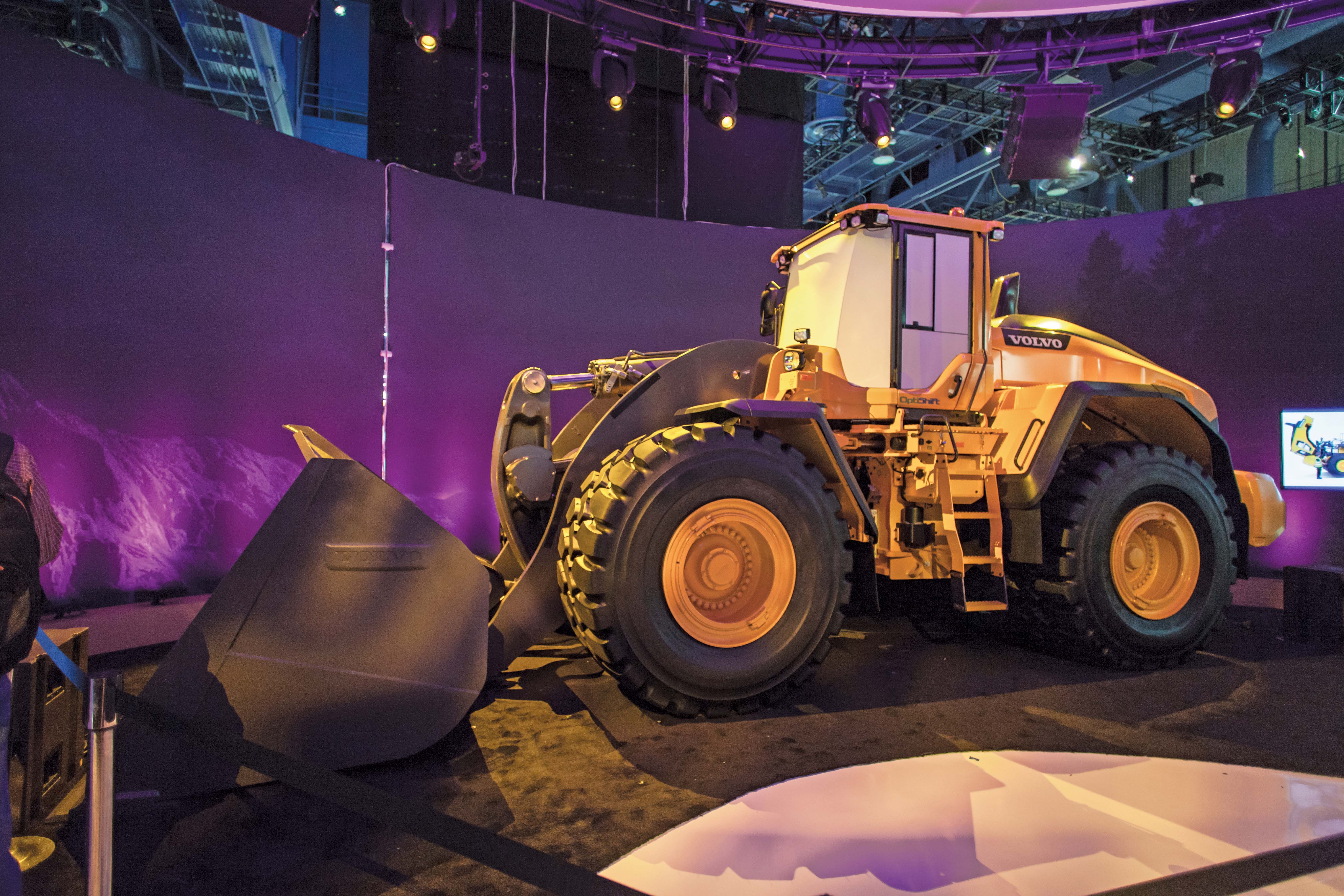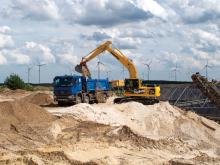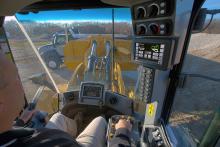
There was no shortage of new and improved loading equipment at this year’s Conexpo-Con/Agg equipment show in Las Vegas.
As has so often been the Case over recent years, emissions regulation was the biggest driver of change, with Tier 4 engines making an appearance in many machines.
For most, this included a considerable amount of redesign work, to make room for larger cooling packs and exhaust systems, and to cope with additional fluid tanks and dosing equipment for exhaust fluids such as AdBlue. Manufacturers had therefore taken the opportunity to update cabs and to improve service access on most of the loaders and excavators on show.
Not surprisingly, given
The larger 982M boasts a C13 engine with 288kW of power. The machine has longer loader arms and larger lift cylinders than the 980M, making it suitable for loading a range of off-highway trucks.
The new engines, along with hydraulic and axle improvements, have led to claims of a 10% improvement in fuel consumption over previous 980K models. A revised colour screen in the cab provides increased machine control and can be used as a monitor for the rear-facing camera. It also incorporates Cat’s Production Measurement tool that can deliver a range of management information, including payloads, fuel consumption, idle times and operating hours.
Further down the weight range the company also introduced the 966M and 972M loaders, both of which can now be ordered in XE specification with Cat’s hydro-mechanically variable transmission system. This combines the best aspects of a hydrostatic driveline with a conventional powershift transmission and is said to offer up to 25% fuel savings over a standard powershift model.
The company’s Eco throttle pedal that applies a mechanical force against the operator’s foot to reduce excessive use of the engine, plus load sensing hydraulics, are said to further cut fuel use. LED entrance and working lights provide much improved illumination for winter and night-time working with the machines.
Among the latest additions to
The WA470-7 has a large capacity torque converter with lock-up as standard, improving acceleration and hill climbing ability. Inside the cab a 7” monitor allows the operator to modify a range of machine settings, from auto-idle shutdown to the reversing fan control.
Lock-up torque converters can also be found in the latest K Series
One of the most striking loaders at the show was JCB’s heavily revised 457. With a completely new design, including a single-piece engine cover and a new cab, the loader is now powered by a larger MTU Tier 4 Final diesel engine, in place of the previous
The 457 has a new
The larger Hyundai cab now comes with an LCD monitor that can be used for the rear-view camera. As with all 9A models, the HL740-9A comes with the firm’s HiMate Remote Management System, allowing dealers to remotely diagnose and monitor the machine’s performance.
Buyers looking for further choice among manufacturers can now try two loaders from
Of course it wasn’t just loading shovels that benefitted from updates this year. There were plenty of crawler excavators that had also seen major engine and drivetrain upgrades.
Again Caterpillar was at the forefront, with the introduction of the F Series line. Perhaps the most impressive model on display was the 92tonne 390F crawler machine. Powered by Cat’s C18 ACERT engine, the excavator is said to use 7% less fuel than the previous 390D.
All F Series machines come with Cat’s Adaptive Control System valve that electronically manages flow and pressures in response to joystick movement. The F Series models also benefit from improved serviceability, thanks to conveniently grouped service points and fluid drain taps.
The big new one on the Komatsu stand was the introduction of Dash-11 excavators, with the PC240LC-11 and the PC490LC-11 the first to make an appearance. Weighing in at around 50tonnes, the PC490LC-11 boasts a Tier 4 Final 268kW diesel engine but is said to be up to 7% more fuel efficient than the previous machine.
There were new excavators on the Case stand too, in the shape of a preview of the firm’s new D Series line. The CX350D will be available from early next year, weighing 37tonnes and boasting heavy-duty digging forces. The machine gets Tier 4 Final power with a combination of cooled exhaust gas recirculation, Selective catalytic reduction and a diesel oxidation catalyst to reduce emissions, while offering up to 10% more efficiency, and crucially, a claimed 8% improvement in cycle times.
Not to be outdone, Volvo took the wraps off its first E Series crawler models, with the EC380E taking centre stage. The 38tonne machine uses Volvo’s Tier 4 Final D13 engine and, in common with many competitors, Volvo is claiming both improved emissions and up to 9% less fuel consumption.
The excavator features an integrated work mode system that offers operators five working modes. The machine can also be set to automatically reduce speed or shut down after a set period of inactivity, further cutting fuel use.
With
Whether you operate with wheeled loaders or crawler excavators, or a combination of the two, there is certainly plenty of new metal on offer from manufacturers to attract your attention. In almost every Case those manufacturers are claiming improved productivity, reduced fuel use and lower operating costs.
There is a price to pay for the latest technology though and customers looking at Tier 4 machines may be surprised to find just how high the new technology has pushed initial purchase prices. Hopefully, whole life costs and the increased production will justify the investment..









